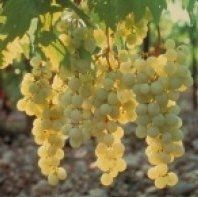Whither the world's biggest vine collection?

Although the Institute Magarach in the Crimea is immensely, and rightly, proud of its 3,500-strong vine collection drawn from 41 countries, the world's biggest vine collection was begun by the very first professor of viticulture at the university of Montpellier in the late 19th century when French vines were under attack from phylloxera (and had recently suffered at the hands of the two mildews). This southern French collection currently comprises 7,500 accessions* from 47 different countries. Since 1949 it has been located at the Domaine de Vassal on a spit of sand on land owned by Domaine Listel near Marseillan Plage just west of the Mediterranean port of Sète. The sand means that the vines can be grown on their own roots without any danger of attack from phylloxera or nematodes. It has been managed jointly by INRA and the academic nucleus known, in one of those very French elisions, as Montpellier SupAgro.
However, a cloud has been hanging over this sunny stretch of coast and there has been some uncertainty about the future of this unique resource – giving rise to some rather doom-laden tweets and the like. No less an authority than Professor Alain Carbonneau, the head prof of viticulture at Montpellier, reports that such panic is premature: 'Due to the high cost of the lease, medium-term salinity risks, the sanitary status of most of the vines, and the difficulty of evaluating the real viticultural and oenological potential of the varieties, INRA recently decided to move this collection to its vineyard at Pech Rouge.'
Pech Rouge is INRA's principal viticultural and oenological experimental station near Gruissan on La Clape just south of Narbonne. As Professor Carbonneau points out, it too has sandy soils which are particularly useful in providing a perfect control against the nematode Xiphinema index and fanleaf virus.
The transfer of the collection is expected to take place over the next few years but is, as he says, a very onerous operation, both in terms of practicalities and finances. It is expected to require several million euros to accomplish and it is to be hoped that these funds will be met by the national public organisation that is INRA – although it seems to me that this collection is of value to the entire world of wine, not just France. And one of the unfortunate consequences of the move is that brilliant researchers such as Thierry Lacombe will spend years and years absorbed in this transfer rather than being free to carry out useful research projects, which will be a loss for both French and international scientific knowledge.
Also with some usefully sandy soils, but well to the east of the Vassal collection and its new home, is Domaine de l'Espiguette in the Petite Camargue in the western Rhône delta, where France's collection of commercial clones of the varieties officially registered in the French catalogue is managed by the IFV (Institut Français de la Vigne et du Vin, another semi-professional national institute).
* Our co-author José Vouillamoz explains: 'Riesling, for example, is a variety. If you only have one in your collection, then it's an accession. A particular type of Riesling found in vineyard X, with a special trait Y, and multiplied vegetatively in your collection (usually 10 vines) is an accession.
'For any given variety you can have dozens or hundreds of accessions. That's why the 7,500 figure given for Vassal does not correspond to the number of varieties. You should also keep in mind that this number includes wild vines (silvestris), other Vitis species, rootstocks and hybrids. We understand Wine Grapes' total of 1,368 varieties better with this information…'
Become a member to view this article and thousands more!
- 15,404 featured articles
- 274,903 wine reviews
- Maps from The World Atlas of Wine, 8th edition (RRP £50)
- The Oxford Companion to Wine, 5th edition (RRP £50)
- Members’ forum
- 15,404 featured articles
- 274,903 wine reviews
- Maps from The World Atlas of Wine, 8th edition (RRP £50)
- The Oxford Companion to Wine, 5th edition (RRP £50)
- Members’ forum
- Commercial use of our Tasting Notes
